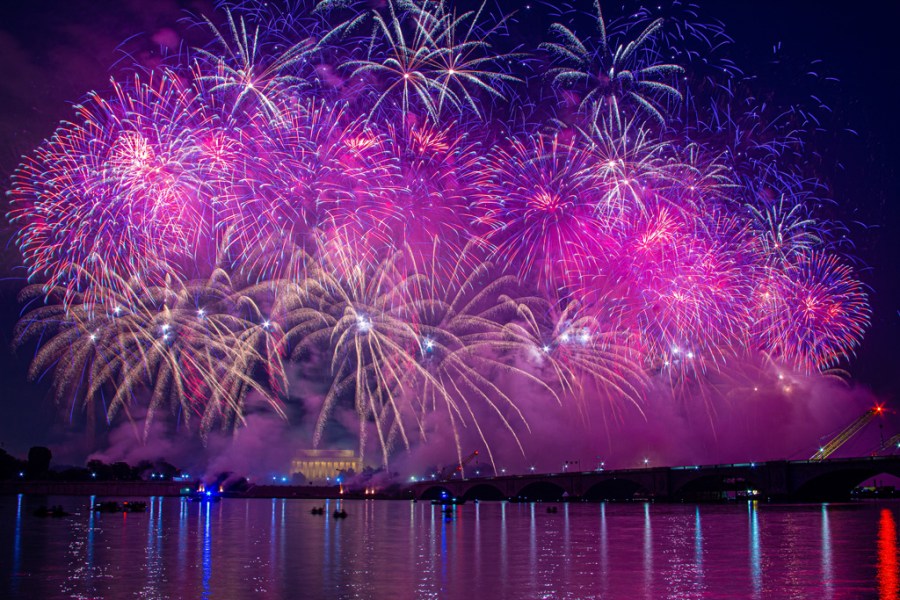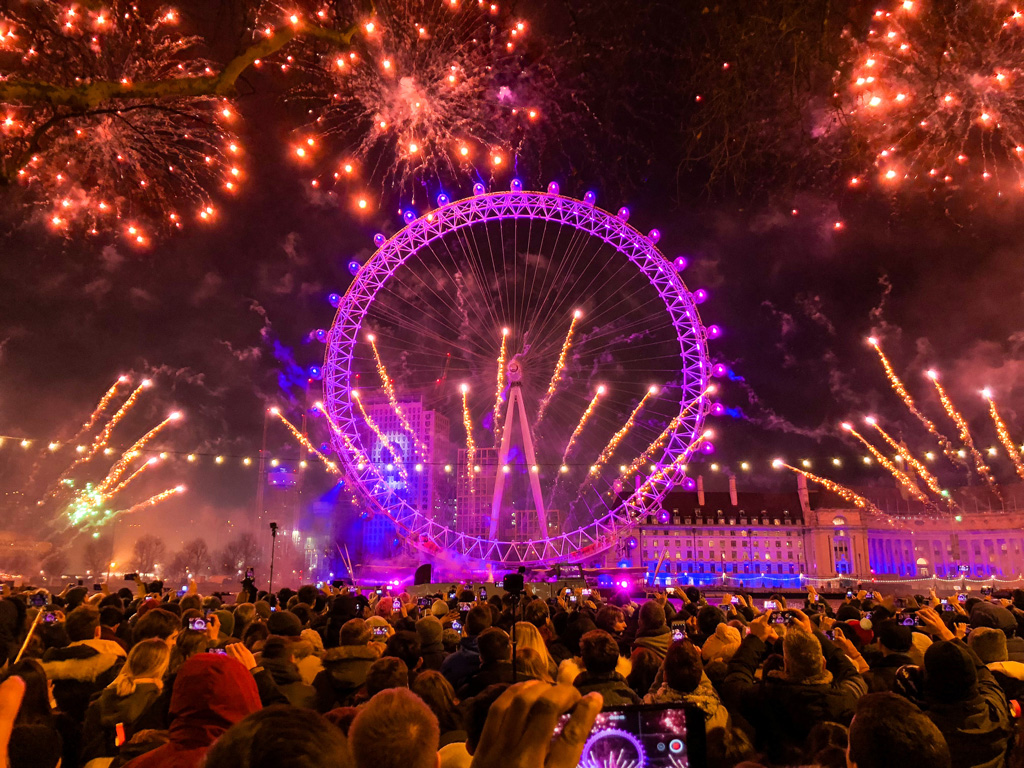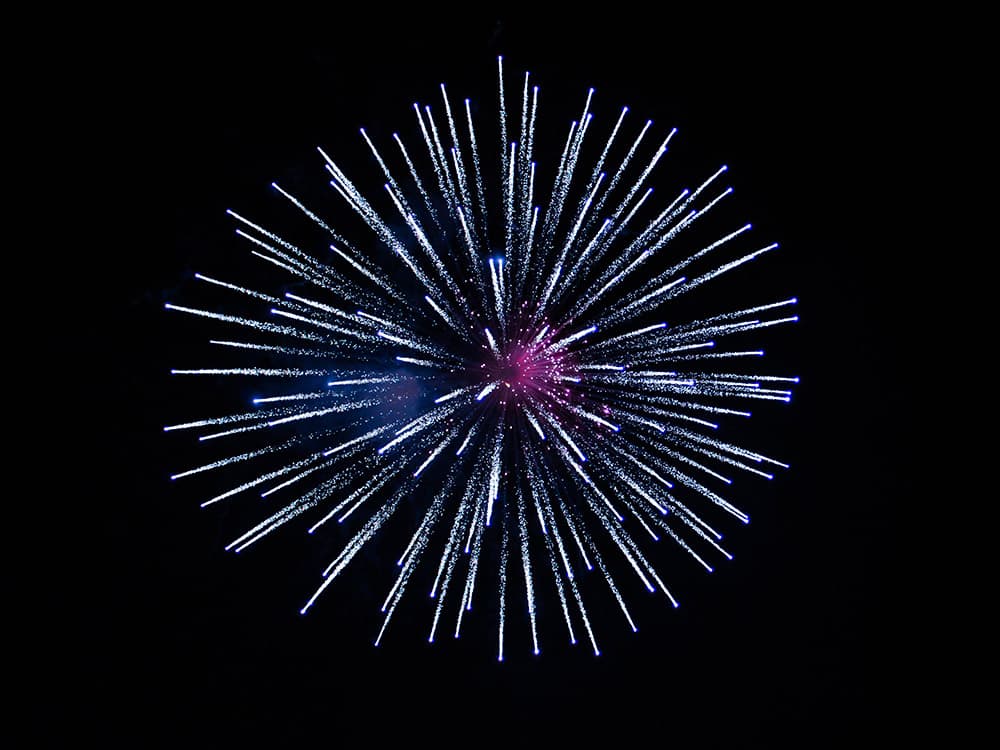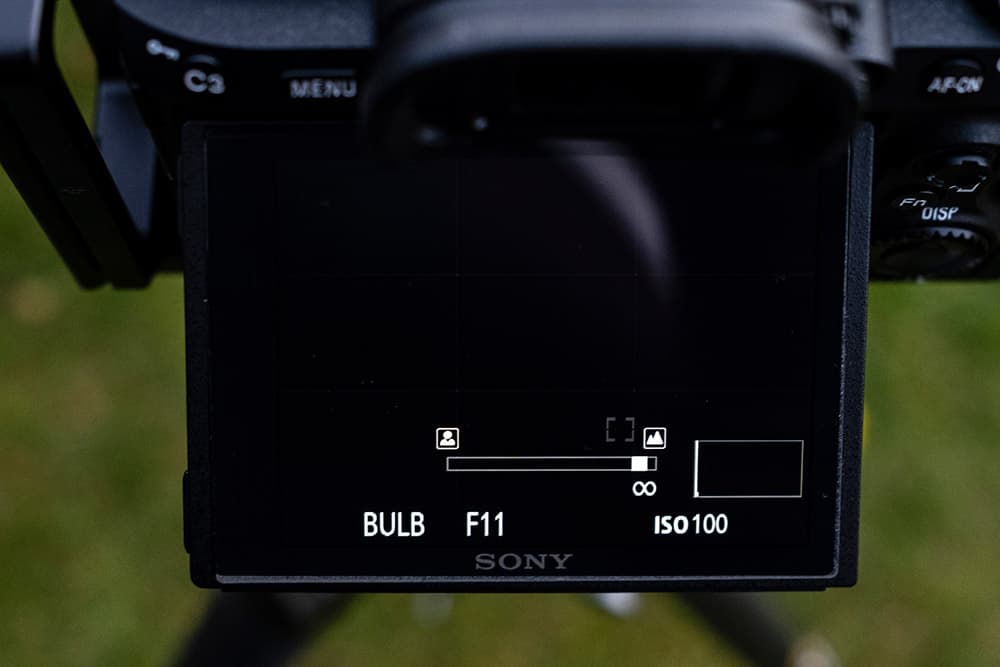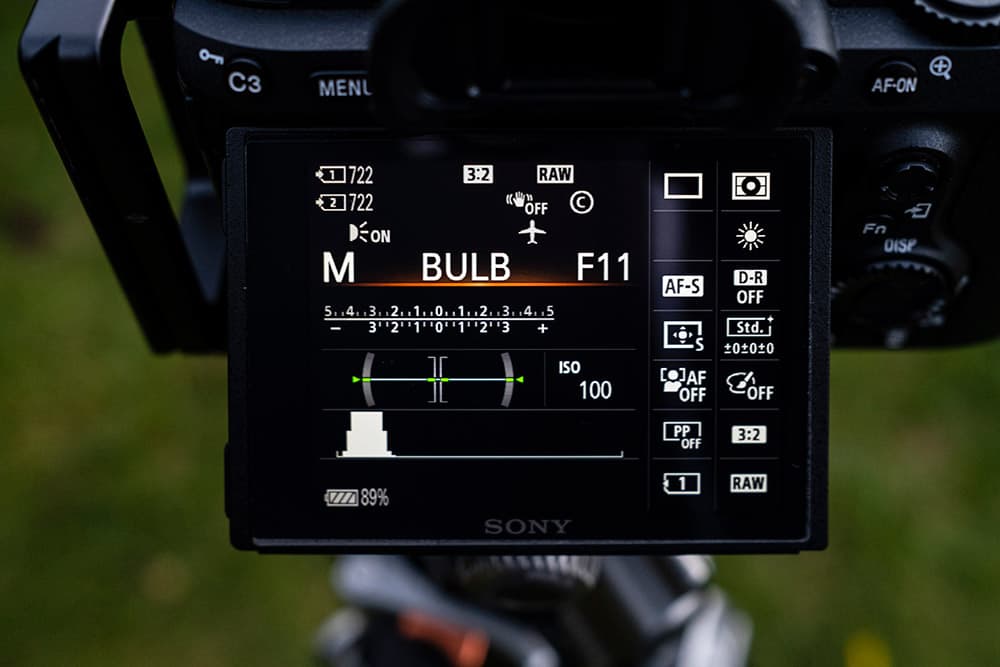Fireworks displays are fascinating and colourful but also a great challenge to photograph. Follow this guide for tips on how to capture this spectacle of light.
Where does photography come from? The word photography comes from the Greek for writing or drawing with light, and firework photography is pretty much that.
With a dark sky as a canvas combined with a long exposure, fireworks paint their way colourfully into the night sky and can be captured in several different ways. Far from being a one-trick pony, firework photography can take several different forms. So, you may be limited to what’s happening in front of you, but you’re certainly not limited in the ways you can capture it.
The great thing about fireworks is that you don’t need any specialist kit – a kit lens, tripod and shutter remote are all you need. So despite being an eye-catching subject it’s also one of the most accessible. Whether you’re an absolute beginner or an experienced photographer, the technical side of firework photography is pretty simple as long as you have a starting point and know how to adjust settings to control exposure. There’s no metering required here, just manual shooting and a spot of experimentation to capture great images.
How to choose a location for fireworks photography
Shooting fireworks has one foot in technique, while the other is firmly in the sphere of luck. But you can reduce the element of luck significantly by doing a little research beforehand. Use a prior knowledge of local displays to choose a location that provides a perfect viewpoint with the potential for incorporating the surrounding landscape.
Organised fireworks displays are always best from a photography perspective. Because not only do you know exactly where and when the displays will take place, but also the fireworks themselves are much more powerful and visually exciting than those that are available to purchase by the general public. You can shoot from within the display, but this puts you in an extremely crowded environment where the fireworks are often fired overhead.
A better option, and one where your tripod won’t get in the way of other people or worse, get knocked over, is to find a shooting location outside the event. This requires you to know exactly where the fireworks will be fired. However, it opens up more creative possibilities and means you’ll be able to shoot towards the fireworks rather than upwards where you can only capture the bright colours against the dark sky.
Approaches to fireworks
The location from where you shoot the display will often dictate how you compose your images and how much of the location can be included to provide foreground interest and context. There’s often a temptation to focus on the sky where the exploding fireworks dominate the shot which is an approach in itself, but don’t be afraid to think more creatively and try other approaches such as shooting wide-angle to include a cityscape or landscape scene in the foreground.
There are plenty of compositional approaches that can be taken when shooting fireworks. And while for less experienced photographers sticking to one can be a good idea to allow you to experiment without constantly changing composition and lens focal length in the dark, more experienced photographers may choose to do just that. It ultimately comes down to what you’re comfortable doing.
Tips for photographing fireworks
Photographing fireworks requires you to take full manual control over the camera, so if you’ve never strayed away from Auto or Program mode before, now is the time to take the plunge. The skills you will learn will help you in other areas of your photography too. Whether you’re it’s the first time you’ve photographed fireworks, or the 16th time, Bonfire night or Guy Fawkes night is a great time to get some amazing shots.
If you are not familiar with shooting in manual mode read our beginners guide to Exposure, aperture, shutter, ISO, and metering.
You’ll also be working in the dark, so it pays to do some preparation first. Andrew James shares some things below that you need to know about photographing fireworks on bonfire night before venturing out:
1. Use a tripod
Even with the huge leaps forward in image stabilisation over the last few years, if you are going to be photographing fireworks, it pays to take a tripod. That way you can keep as much sharpness and detail in the fireworks, while also keeping buildings and other contextual elements looking nice and crisp.
As you will be working in the dark and exposures are likely to be 10secs or more, the camera must be fixed securely in place so that no camera movement can ruin your shot. Also, ensure that all three legs are tightly locked so they won’t slip. Even a minuscule amount of movement can spoil the image, so don’t take that chance.
Be very careful where you locate the tripod if there are lots of people walking past the display, or excited kids running about. And obviously, watch out for any bonfires!
Remember to switch off any image stabilisation in your lens because it won’t be necessary when the camera is on a tripod – and it could actually cause the image to blur slightly.

Image: Andrew James
2. Remote release
There is no point mounting the camera on a tripod if you then jog the camera when you fire the shutter by hand. Instead, you should use a remote or cable release to allow safe, jog-free operation of the shutter. Another option is to use a phone app that fires your shutter button via Bluetooth.
If you don’t own a remote release you can use your camera’s self-timer, but the delay between pressing the shutter button and the exposure starting means you might miss the optimum moment to take the shot. To avoid this as much as possible, set the time delay from pressing the button to the shutter firing to the minimum your camera allows.
3. Focusing
If it’s so dark that you can’t see your hand in front of your face, how are you going to focus? The simplest method is to manually focus the camera to infinity, which should be marked on your lens with this ∞ icon. You will normally be far enough from the fireworks so that once the lens is set to infinity, you can leave it there.
Or you can focus using Live View on a DSLR or focus peaking/zooming in with a mirrorless camera. Fireworks go off very fast, so try pre-focusing on a building or landmark.
Alternatively, shine a torch onto something approximately one-third of the way into the scene and focus on that point. This could be the heads of the crowd watching the fireworks display, for example.

Image: Andrew James
4. Head torch and gloves
A head torch is a hugely practical piece of kit that is perfect for anyone who regularly takes photos at night. You can use it to help illuminate the camera when you need to make adjustments or to shine on objects you need to focus on. Because the torch is fixed on your head, both hands are left free to operate your kit, or even eat a hotdog.
Take along some decent photography gloves that keep your hands warm while also enabling you to adjust camera buttons and dials. Cheap woollen items will feel like boxing gloves and get very frustrating.
5. Scout out your location in daylight
If you intend to visit a local fireworks display, then it’s definitely worth casing the joint first! Find out where the fireworks are going to be released from and where the front of the crowd will be, as it will help give you an idea of where best to set up. Look for high ground to shoot from, and consider what is in the background and anything that can be used to give your image a fresh twist.
If there is a local landmark near the display, such as an old church tower, monument or photogenic tower block, try and include that too. Such elements will keep the shot interesting all year round.
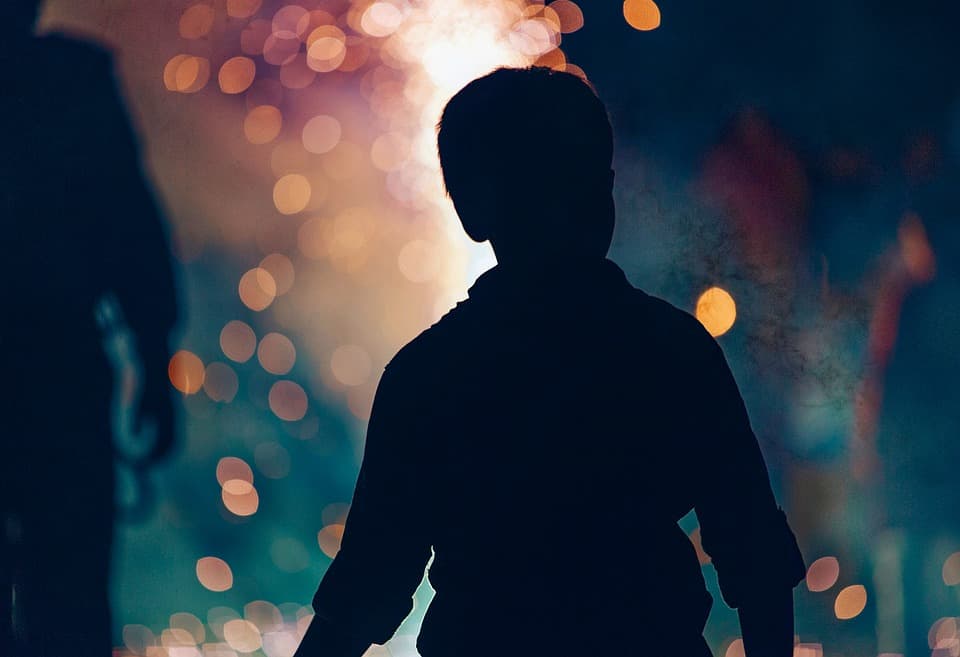
Use silhouettes of people or buildings to add more interest to your image. Image: Andrew James
6. Take a stepladder or box
If you’re lucky enough to find some high ground to shoot from, you’re doing well; if not, you might find yourself stuck behind a crowd of spectators. To frame them neatly at the base of your shot, you’ll need your tripod extended to its maximum height. But unless you are equally tall, this makes it difficult to look through the viewfinder to frame the scene or make exposure adjustments. So borrow a tip from the paparazzi who often jump onto little step ladders or boxes to give themselves a boost in height.

Slower shutter speeds can create beautiful light streaks. Image: Andrew James
7. Play with the exposure
It is all too easy to underexpose or overexpose your fireworks shots. If you find that your fireworks look too bright, try altering your settings to achieve a darker sky and crisper fireworks. While the ‘Fireworks’ mode on more entry-level cameras might sound tempting to use, the end results are usually disappointing. Your camera may have some other useful features though. Many Olympus cameras have “Live Time / Live Bulb” modes that allow you to see the exposure as it’s happening and this can be very helpful for changing settings on the fly.
8. Use reflections
If you’re lucky enough to be photographing fireworks near water, then reflections work really well. Being further from the display might mean fewer crowds to contend with too!
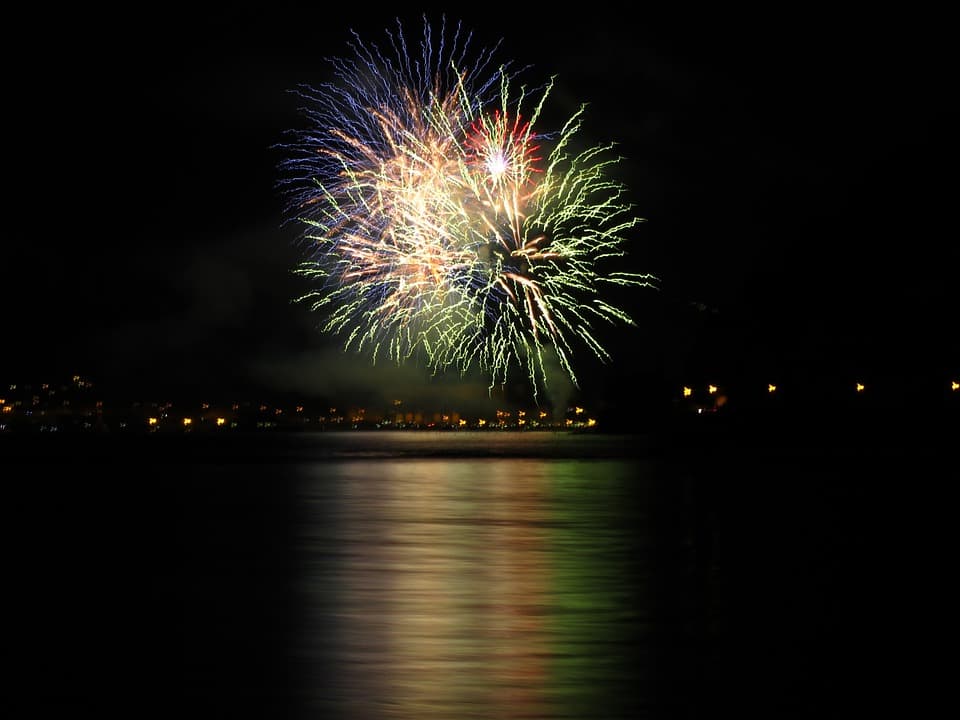
Image: Andrew James
9. Defocus for bokeh
Try manually defocusing at a wide lens aperture for interesting effects. Another approach is to manually focus the lens as normal, and after the shutter button is fired, rotate the focus ring during the long exposure – e.g. if your exposure is 4 seconds, adjust focusing after 2 seconds.
10. Include the location
Including a prominent building, cityscape or landscape is a great way to add foreground interest and context to your shots. In the above image from London, using a faster shutter speed than normal at 1/30sec with the ISO at 1600 has captured the fireworks as sparkles rather than streaks.
11. Capture silhouettes
There will be times when you have people standing in front of you as you shoot, so use them to add a sense of depth and foreground interest. Similarly, if there are trees on the horizon, these can be incorporated into the composition to break up the dark sky for less abstract images with a sense of scale.
12. Focus on the sky
There’s nothing wrong with focusing purely on the sky and capturing groups and individual fireworks; the contrast of light, dark and colour works well. This is a great option for beginners shooting fireworks for the first time, and the resulting images are perfect for a surreal editing technique we’ll show you on the following pages.
Set up your camera for taking photos of fireworks
James Abbott shares his guidance for setting up your camera for photographing fireworks:
1. Set up the camera and focus
Focusing can be tricky if you’re simply shooting the sky, but manually focusing on infinity combined with f/11 will provide sharp fireworks. If you’re incorporating a cityscape or landscape into your composition, the normal rules of focusing apply, so you’ll need to focus roughly one-third of the distance into the scene beyond the foreground interest.
2. Camera settings for fireworks photos
Set the camera to manual mode at f/11 with ISO at 200 and white balance set to daylight to capture fireworks colours faithfully. If you have a remote, keep the shutter open at the B setting. If not, set the shutter speed to between one and 30 seconds and see how things look, adjusting as necessary. Manual exposure is probably best to start with, as exposures are unlikely to last much more than 5-10ses. Bulb is better when you need to keep the shutter open for a much longer period of time because the shutter remains open until you press the shutter button a second time to close it.
3. Use a black card as a shutter
If want to ensure you are getting more than one firework in the scene or shooting long exposures in Bulb mode, you can hold a black piece of card over the front of the lens to act as a temporary ‘shutter’ between fireworks. This helps to avoid stray ambient light from entering the lens and helps to capture a sky full of fireworks. But you’ll need a shutter remote to hold the shutter open.
If you don’t have a card, then a cupped, dark-gloved hand will work. But take care not to touch the lens itself. Extend the exposure time and hold the card over the front of the lens between fireworks to prevent any ambient light from entering. The shutter may be open for 15secs or 20secs, but as you are holding back the exposure with the card, the camera is only capturing the light trails from each separate explosion. This technique works best with bulb mode, especially if you need to extend the exposure.

You can use black card infront of lens to act as a shutter when photographing fireworks Image: James Abbott
Kit list for fireworks photography
James Abbott’s kit list for photographing fireworks:
With exposures typically ranging from a few seconds to even minutes in duration, depending on your shooting technique, a tripod is essential for keeping the camera steady to avoid camera shake.
Shutter remote
The shutter remote avoids the delay of the camera self-timer, while avoiding camera shake. They’re also essential for shooting in Bulb mode. You can now get apps that do the job.
Versatile zoom
You can shoot fireworks with almost any lens, depending on the composition you’re aiming for. But a versatile medium zoom with a full-frame equivalent of 24-70mmm or 24-105mm will provide maximum flexibility in a single lens.
Headtorch
When working in darkness a torch is a must, so you can easily see camera settings and the environment around you. A head torch frees your hands and many feature a low-power red light that can be left on without affecting your shots.
Black cardboard
If you decide to shoot in Bulb mode, where you keep the camera shutter open to fill the sky with fireworks, a black sheet of card can be held over the lens between fireworks and removed when they’re fired to capture a sky full of light.
See Andrew James’s website at www.andrewjamesphotos.co.uk
Featured image: Getty Images
Further reading:
- Guide to night landscape photography
- How to take better smartphone photos
- Get creative with light painting
- Night photography: how to photograph the night sky, moon and stars

